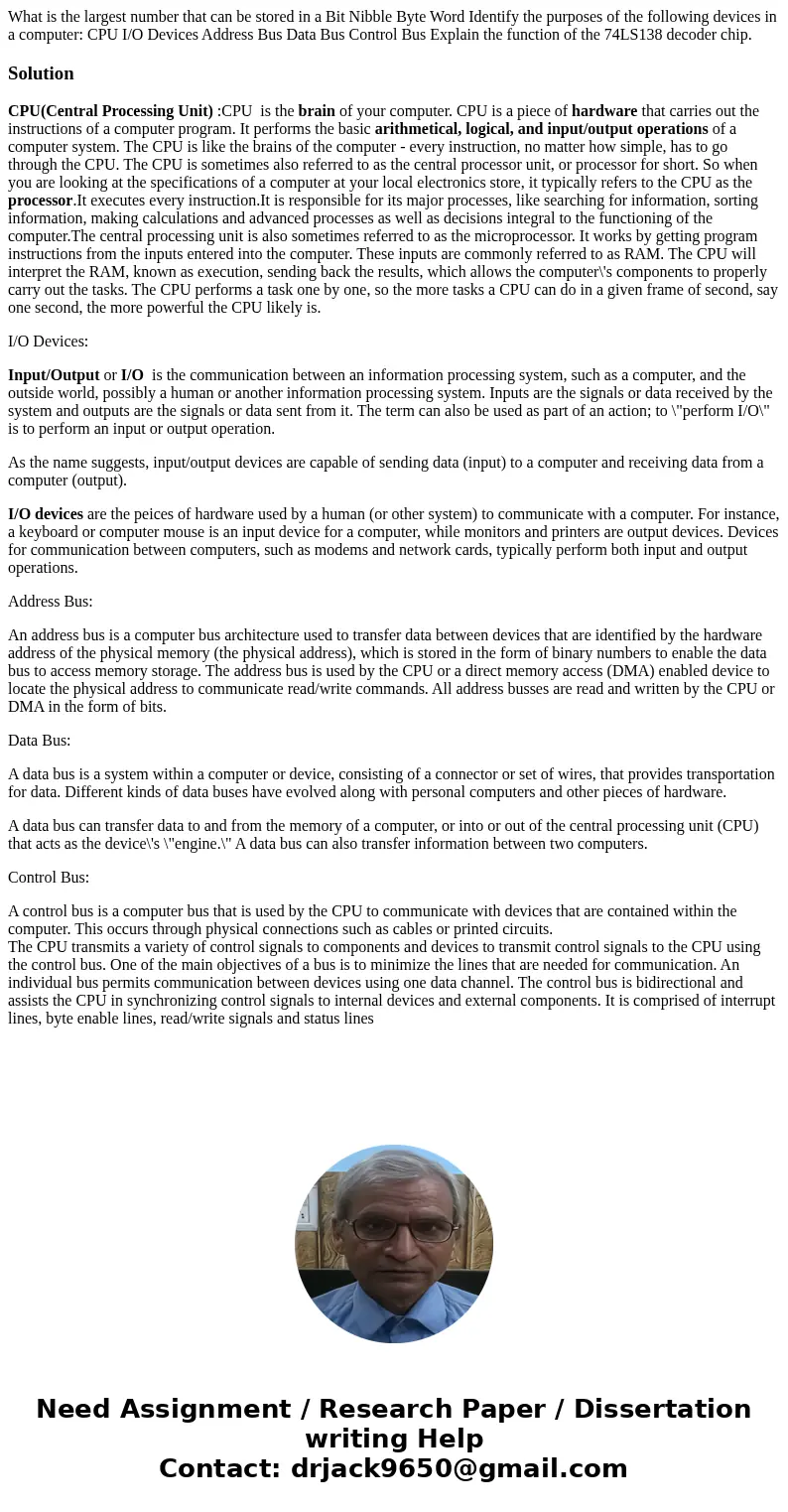What is the largest number that can be stored in a Bit Nibbl
Solution
CPU(Central Processing Unit) :CPU is the brain of your computer. CPU is a piece of hardware that carries out the instructions of a computer program. It performs the basic arithmetical, logical, and input/output operations of a computer system. The CPU is like the brains of the computer - every instruction, no matter how simple, has to go through the CPU. The CPU is sometimes also referred to as the central processor unit, or processor for short. So when you are looking at the specifications of a computer at your local electronics store, it typically refers to the CPU as the processor.It executes every instruction.It is responsible for its major processes, like searching for information, sorting information, making calculations and advanced processes as well as decisions integral to the functioning of the computer.The central processing unit is also sometimes referred to as the microprocessor. It works by getting program instructions from the inputs entered into the computer. These inputs are commonly referred to as RAM. The CPU will interpret the RAM, known as execution, sending back the results, which allows the computer\'s components to properly carry out the tasks. The CPU performs a task one by one, so the more tasks a CPU can do in a given frame of second, say one second, the more powerful the CPU likely is.
I/O Devices:
Input/Output or I/O is the communication between an information processing system, such as a computer, and the outside world, possibly a human or another information processing system. Inputs are the signals or data received by the system and outputs are the signals or data sent from it. The term can also be used as part of an action; to \"perform I/O\" is to perform an input or output operation.
As the name suggests, input/output devices are capable of sending data (input) to a computer and receiving data from a computer (output).
I/O devices are the peices of hardware used by a human (or other system) to communicate with a computer. For instance, a keyboard or computer mouse is an input device for a computer, while monitors and printers are output devices. Devices for communication between computers, such as modems and network cards, typically perform both input and output operations.
Address Bus:
An address bus is a computer bus architecture used to transfer data between devices that are identified by the hardware address of the physical memory (the physical address), which is stored in the form of binary numbers to enable the data bus to access memory storage. The address bus is used by the CPU or a direct memory access (DMA) enabled device to locate the physical address to communicate read/write commands. All address busses are read and written by the CPU or DMA in the form of bits.
Data Bus:
A data bus is a system within a computer or device, consisting of a connector or set of wires, that provides transportation for data. Different kinds of data buses have evolved along with personal computers and other pieces of hardware.
A data bus can transfer data to and from the memory of a computer, or into or out of the central processing unit (CPU) that acts as the device\'s \"engine.\" A data bus can also transfer information between two computers.
Control Bus:
A control bus is a computer bus that is used by the CPU to communicate with devices that are contained within the computer. This occurs through physical connections such as cables or printed circuits.
The CPU transmits a variety of control signals to components and devices to transmit control signals to the CPU using the control bus. One of the main objectives of a bus is to minimize the lines that are needed for communication. An individual bus permits communication between devices using one data channel. The control bus is bidirectional and assists the CPU in synchronizing control signals to internal devices and external components. It is comprised of interrupt lines, byte enable lines, read/write signals and status lines

 Homework Sourse
Homework Sourse